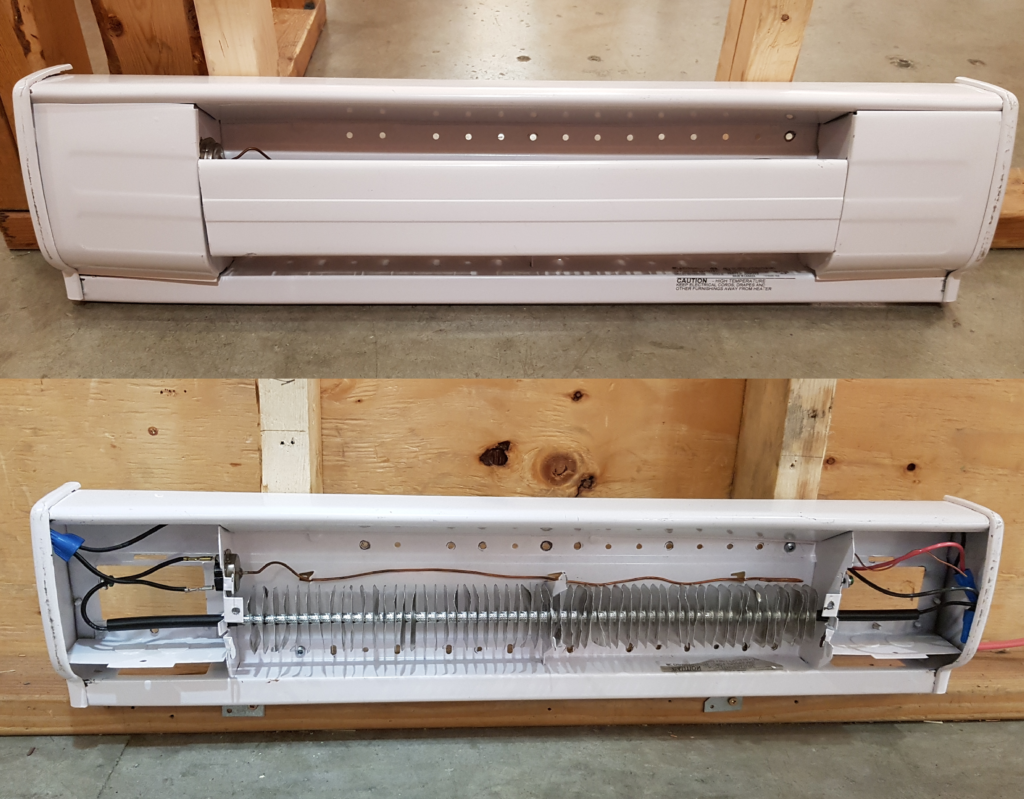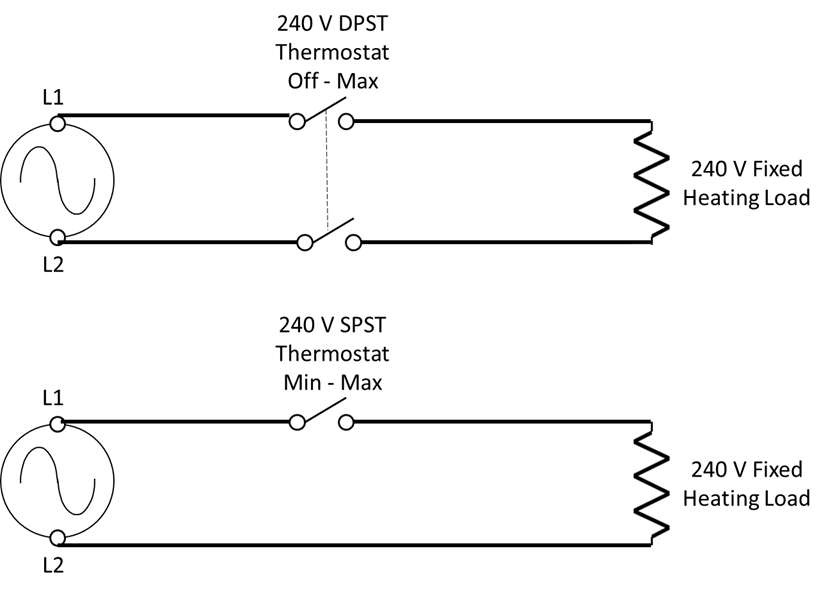Heating
11 Baseboard Heat
Click play on the following audio player to listen along as you read this section.
The simplest form of fixed electric heat is the baseboard heater. These small, modular units with their long horizontal profile are installed underneath windows and other areas of high ambient heat loss.

Energized at 240V in households to maximize heat production, baseboard heaters are commonly controlled by line-voltage thermostats installed in each room or heated area though some can also be controlled by built-in thermostats installed directly into the unit housing.

Because line-voltage thermostats directly control the flow of current to the heater element they must be rated for whatever value of current flows through them.
Baseboard heaters are rated for their power output, in watts, and are generally available in 250W increments, thus allowing installers to select the appropriate size of heater for the area being heated. To find the current requirements of a device, divide the rated power by rated voltage.
For example, a thermostat rated 3kW at 240V would be able to handle 12.5 amps of current.
[latex]12.5\text{ A}=\dfrac{3000\text{ W}}{240\text{ V}}[/latex]
When installing any kind of baseboard heaters, care must be taken not to install any other electrical equipment above them. No receptacles may be installed above a baseboard heater because of the risk of a cord resting on the heater and getting damaged by the heat. If a receptacle is required in a section of wall that also has baseboard heat, some manufactures will provide spacing inside the heater for installation of a receptacle.
Small modular fixed electric heating loads. Rely on passive convection to heat a room, controlled by local thermostats.
A common way to refer to a 240V thermostat.
Meaning the component is designed to be safely operated within certain tolerances. EG: A 240V Rated switch could safely switch a 120V load, but not a 480V load.

